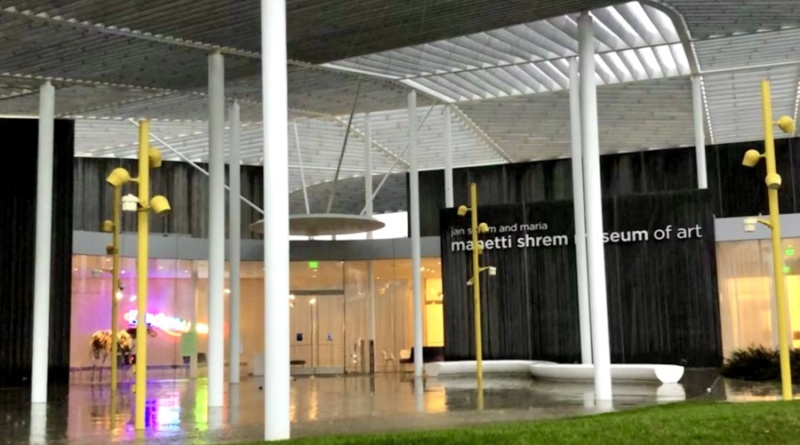“From Moment to Movement: Picturing Protest” opening at the Manetti Shrem Museum
PHOTO: The Jan Shrem and Maria Manetti Shrem Museum of Art in the midst of setting up the new exhibits, opening Jan 8th.
By Naneh Grigor Kotchikian,
BlueDevilHUB.com Staff —
The back room of the Manetti Shrem Museum on the UC Davis campus is filled with large wooden crates, which stand thoroughly organized against the wall with bubble wrap spilling out the top. Underneath sit the works of art that will be displayed in an upcoming January exhibition.
“From Moment to Movement: Picturing Protest in the Kramlich Collection” is a collection that will give awareness to social issues through animated videos. “It questions the supposed neutrality of the spectator, as these works compel viewers to bear witness to personal and communal struggles and forms of resistance,” said Susie Kantor, the curator for the exhibition.
The museum wants to connect with high school students through the impact of art. “I hope to convey to students that there is power in resistance in all of its forms, even with the most entrenched power structures and systems,” Kantor said.
This exhibit speaks on larger issues to events that high school students may not be completely aware of.
“Protest knows no age limits. The works on display in the exhibition “From Moment to Movement” span 30+ years of artistic creation and an even longer trajectory of historical events,” said professor James Housefield, who studies the design of museum exhibits.
All the work in the exhibit has a deeper meaning than what is seen to the eye. “The creators and works in this exhibition remind us that art can keep alive conversations about how to make the world we have into the future we wish to inhabit, even if that remains an unfinished project or long-term dream,” Housefield said.
“‘Marooned’ is a handmade animation for which I made 5,172 paintings,” said Shiva Ahmadi, an artist who’s new work will be shown in this gallery. It took a year to create those paintings for inclusion in a five-minute video.
Her work comes from her own personal experiences and the way she grew up. Inspired by Middle Eastern culture, she uses watercolors to animate pictures of devilish figures interacting with bright and vibrant structures. It’s playful in the way that it bounces across the screen but can also have a more sinister undertone.
“The animation begins with the individual efforts of these creatures as they assiduously work towards their goal. The ghouls will maliciously circumvent the creatures who constructed the bridge, and swiftly steer them beyond the frame,” Ahmadi said.
She was inspired by “An image of a young child watching cartoons from behind a table during the bombing in Gaza,” which was a reminder of her own childhood.
“The narrative that unfolds is ultimately one of instability and anxiety, informed by my own experiences and current events in the world,” Ahmadi said.
The message she wants to convey is to bring awareness to current geopolitical events that aren’t looked at or talked about enough.
“I hope the work raises the questions in people’s minds and make them be more sensitive about their surroundings, may it be the climate change and exploitation of natural resources, war, or immigration,” Ahmadi said.
Each installation of art has a different way of speaking to the viewer.
“Many of the videos can be interpreted in different ways and depending on who encounters them, different people may have different reactions,” museum intern Isobella Payne said.


